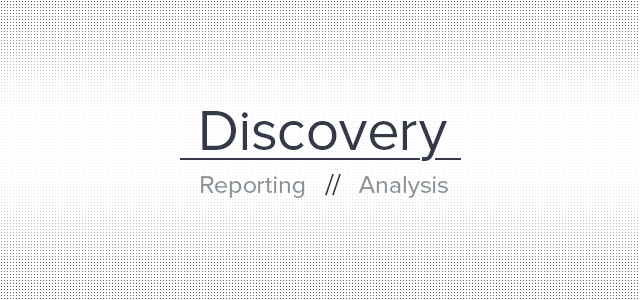Last week, I had the good fortune to attend the Alteryx Inspire 2014 Conference in San Diego, and then spend an afternoon at Tableau Software. Best of all, I had the privilege to give a speech to an engaging and inquisitive crowd of Tableau fans at the Seattle Tableau User Group. A conversation with a friend from Tableau really got me thinking about data discovery work in a more tactical way.

Above: A group photo of last week’s Seattle TUG meeting.
Data Discovery in Tableau
My way of thinking about discovery work is to step back from the data source without thinking too much about what I need to build. In other words, I just build as many different types of visualizations as the data will support. I then go back and review what the data says is interesting or important.
This process is followed by a more deliberate and methodical assembly of dashboards, possibly including story points that highlight any interesting insights yielded from the data. It is an open-minded and open-ended process, followed by even more methodical detective work.
The basic premise that I use when exploring a data source is to identify what kind of dimensional information is available in the data:
- Time
- Geospatial
- Text
- Numbers
- Key records
- Granularity
During my analysis, I create new dimensions by converting continuous numeric values to discrete groupings of numbers for dispersion analysis via histograms. I may also create hierarchies on-the-fly in order to create drill-down paths that the data source may not contain.
The Types of Views I Build
Again, I’m looking to build every kind of view that the data source will support. I’m seeking interesting patterns, outliers and what these patterns look like—humps, gaps, double-humps, etc. Here are some examples of these views:
- Time-series (requires a time dimension)
- Part-to-whole (comparison, ranking)
- Deviation (bar charts, control charts)
- Distribution (rankings, histograms, box & whisker)
- Geospatial (maps, floor plans, planograms)
By applying trend lines and reference lines, I may unearth interesting correlations and other patterns that may only appear when varying the date granularity of a particular time series or within a multi-level hierarchy of a particular dimension.
Alternatively, viewing the characteristics of correlation by direction, strength and shape (Few 2009) may display some interesting patterns. This process normally requires more in-depth analysis to determine if there is any causative relationship between the dimensions and measures being displayed.
The Differences Between Reporting, Analysis and Discovery
Reporting is a basic need in every hierarchy. Reporting creates the context from which analysis can occur because reporting generally raises questions, but doesn’t answer them.
Analysis seeks to understand the causative precursors that created a pattern, trend or outlier. The problem with reporting and analysis is that they usually only apply to well-worn paths of inquisition. Truly unique insight never comes from reporting and analysis.
High-value insight is only achieved through finding novel questions contained within the granular data that isn’t visible in reporting and analysis. It comes from combining granular data from discretely different sources. That’s where discovery begins.

What It Takes to Be a Good Data Discoverer
It’s difficult for me to articulate how I go about discovery with Tableau. When people ask me, I normally say something like, “I put on my headphones with some good jazz, and I start to ‘riff’ with the data.” Because I’ve used Tableau for nearly seven years, this seems natural to me. Give me some data, and let me play. Within a few hours, I may discover something interesting.
My method requires an open-minded and neutral starting point, followed by a very fast and interactive building session. After that, the slower process of assembling a series of dashboards makes it easier to compare related information across a variety of chart types. The value of this process becomes apparent when you gain actionable insight that leads to cost savings, margin improvement or sales growth.
The most interesting customer stories in the Tableau community always involve some surprising insight that leads to rapid improvement.
The Brain as a Pattern Recognition System
This morning, I stumbled on an old TED talk by Jeff Hawkins. Hawkins was the inventor of the Palm Pilot. He has a deep interest in Neuroscience and offers a theory about how the brain actually works as a pattern recognition system.
There is another talk available online that offers more clues as to why visual data discovery works as a means of engaging your thinking via right and left brain functions. For an excellent version of this talk by Iain McGilchrist, I suggest you watch the RSA Animate version below.
What both of these talks touch on is the human ability to recognize patterns and outliers. McGilchrist also examines the nuanced differences between left and right brain thinking.
Tableau seems to engage both left and right-brain thinking in a way that fosters discovery. There are probably specific steps in this process that are important, but they are transparent to me at the moment. Perhaps with a little more reflection, I or others can illuminate the necessary steps more methodically than this post does. If you have more precise thoughts, by all means share them.
Share Your Discovery Stories
What insights have you gained by using Tableau to discover something that would have been difficult or impossible to see any other way? Have you achieved some significant savings or increased profit through Tableau? If so, please share your story in the Comments sections with a link to the visualization that provided the insight.
As always, we’re here to help you with any of your Tableau consulting and training needs. Contact us today!


